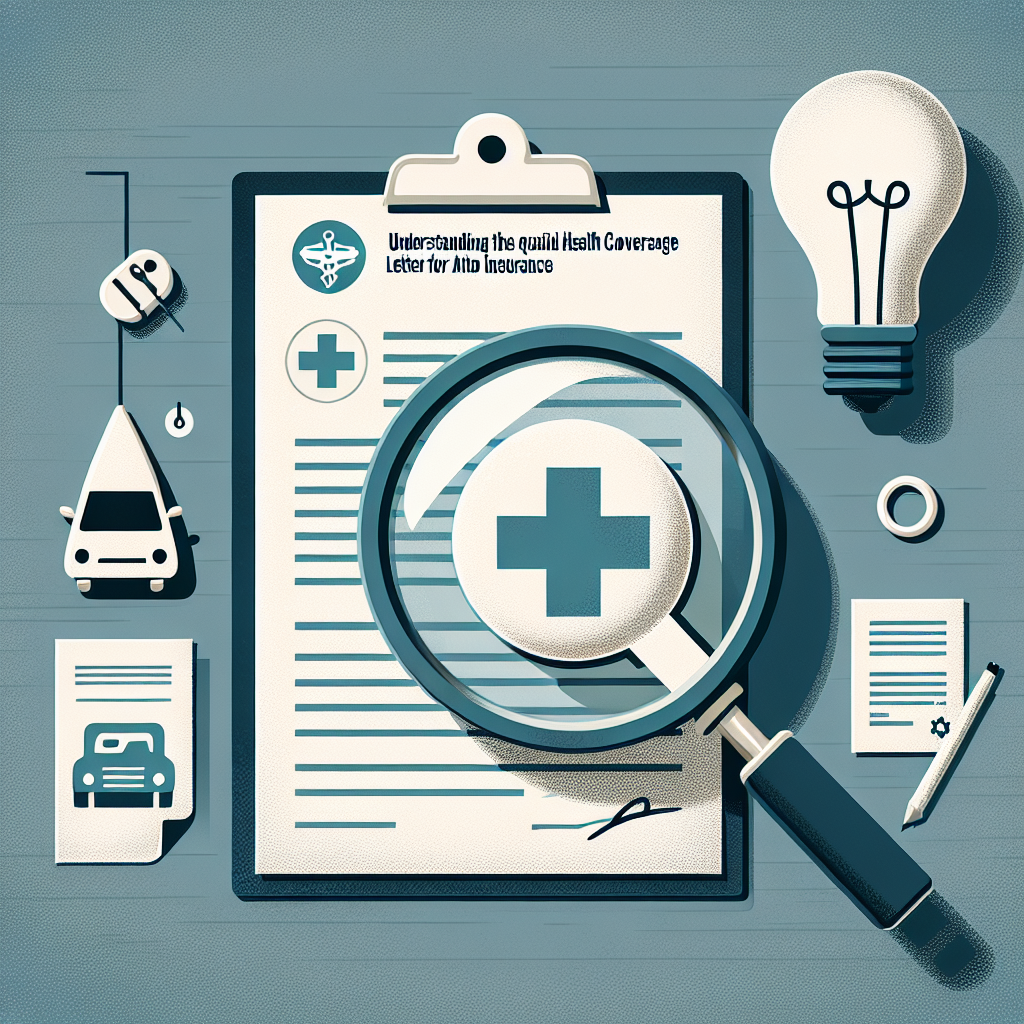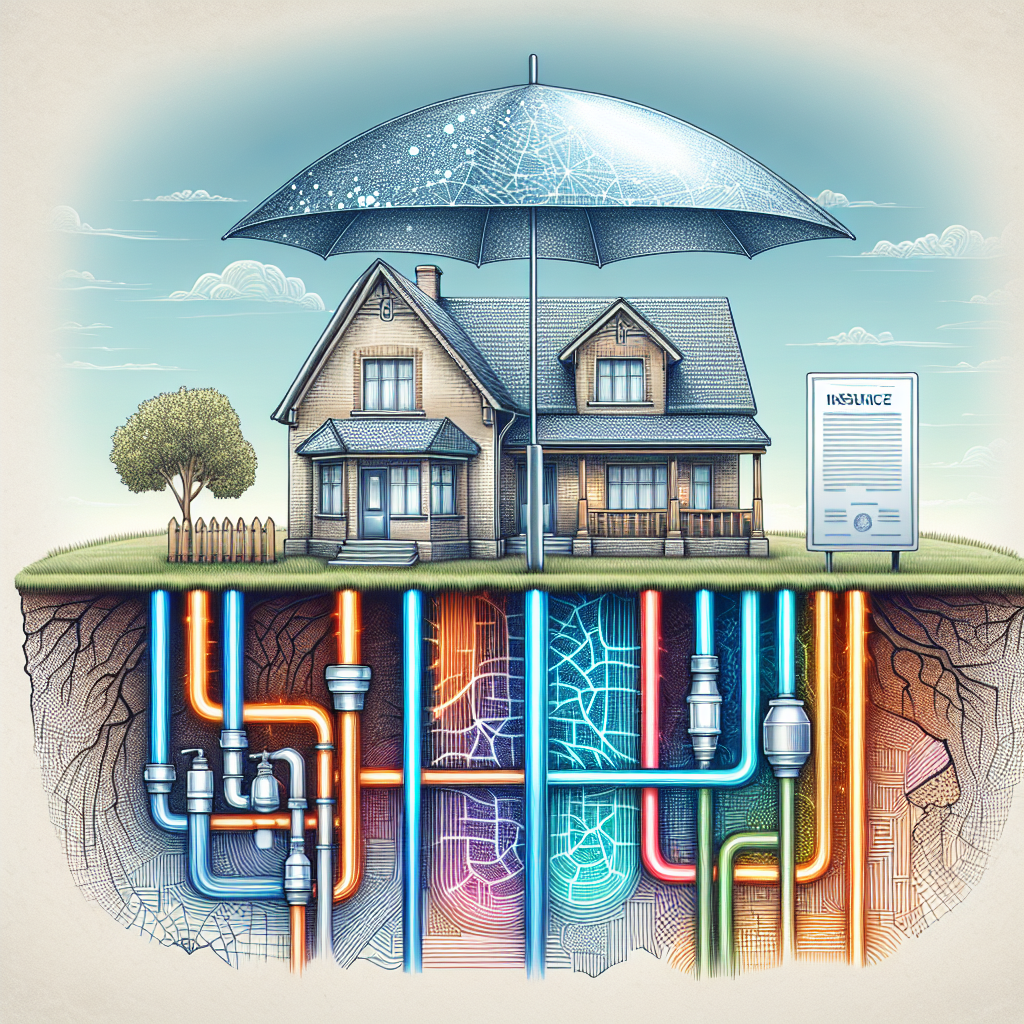Filed under Home Insurance on
Home Insurance Basic Coverage Explained

Your home may be your largest investment, but it’s also where life happens—birthdays, quiet mornings, and everything in between. Insurance is what keeps those moments financially protected when the unexpected strikes. If you came here searching for Home Insurance Basic Coverage Explained, you’re in the right place. This guide cuts through jargon, translates policy fine print into plain English, and gives you practical steps to tailor coverage to your home and budget.
Most homeowners policies follow a standard structure, yet the nuances matter: what’s covered, what isn’t, deductibles, sublimits, and the endorsements that fill costly gaps. Industry organizations like the Insurance Information Institute (Triple-I), the National Association of Insurance Commissioners (NAIC), and research from the Insurance Institute for Business & Home Safety (IBHS) consistently point to one theme—matching coverage to real-world risk is the difference between a minor hassle and a major financial setback.
Below, you’ll find Home Insurance Basic Coverage Explained with examples, insurer expectations, and expert-informed tips you can act on today.
What a Standard Homeowners Policy Typically Covers
Most owner-occupied single-family homes use an HO-3 policy (often called “special form”). While each insurer writes policies differently, the core protections are fairly consistent. Think of your policy as a bundle of coverages that work together:
- Dwelling (Coverage A): Rebuilds your house structure after a covered loss.
- Other Structures (Coverage B): Covers things not attached to your home—fences, sheds, detached garages.
- Personal Property (Coverage C): Pays to repair or replace your belongings—furniture, clothing, electronics.
- Loss of Use/Additional Living Expense (Coverage D): Pays for temporary living costs if a covered claim makes your home uninhabitable.
- Personal Liability (Coverage E): Covers you if someone is injured or their property is damaged and you’re legally responsible.
- Medical Payments to Others (Coverage F): Pays small medical bills for guests injured on your property, regardless of fault.
At a high level, this is Home Insurance Basic Coverage Explained in its simplest form: structure, stuff, temporary shelter, and protections for life’s what-ifs involving other people.
Core Coverages in Plain English
Dwelling (Coverage A)
This is the backbone of your policy. It’s based on the cost to rebuild—not the real estate market price. A proper dwelling limit accounts for local materials, labor, permits, architectural details, and code upgrades. Inflation and supply chain swings can push reconstruction costs higher than expected, which is why many carriers offer extended or guaranteed replacement cost endorsements that add a buffer above your stated limit.
Tip: Ask your agent about a recent replacement cost estimator. If you’ve remodeled kitchens, baths, roofs, or added square footage, your Coverage A should reflect that.
Other Structures (Coverage B)
Fences, gazebos, retaining walls, and detached garages usually fall here. Coverage B is often set at a percentage of Coverage A (commonly around 10%). If your property includes multiple outbuildings or a large workshop, consider increasing this limit or adding an endorsement.
Personal Property (Coverage C)
This protects your belongings anywhere in the world—your living room sofa, your luggage on a trip, or a bike stolen from a rack. Policies usually default to actual cash value (ACV) unless you upgrade to replacement cost coverage, which pays what it costs to buy a new equivalent item today. ACV subtracts depreciation; replacement cost does not.
Watch for sublimits, which cap payouts for certain categories, especially in theft scenarios. Commonly sublimited items include:
- Jewelry, watches, and furs
- Firearms and related equipment
- Silverware and goldware
- Cash, coins, and collectibles
- Business property at home
If you own high-value items, schedule them (also called “personal articles” or “floater” coverage). Scheduling lists each item with an appraised value, typically removes the deductible for those pieces, and often expands covered risks.
Loss of Use/Additional Living Expense (ALE) (Coverage D)
If a covered claim forces you out, ALE pays for reasonable increased living costs—hotel or rental, restaurant meals beyond your normal grocery spend, laundry, pet boarding, and storage. Keep receipts. ALE is a lifeline after fire, burst pipe, or storm damage. Ensure the limit is realistic for your local rental market.
Personal Liability (Coverage E)
Liability protects your assets and future earnings if you’re sued for bodily injury or property damage. It covers legal defense and settlements up to your policy limit. Think dog bite, slip-and-fall, a backyard mishap, or a tree you own damaging a neighbor’s roof. In a world of rising judgments, many advisors recommend at least $300,000 to $500,000, often paired with a personal umbrella policy for an extra $1 million or more.
Medical Payments to Others (Coverage F)
This no-fault coverage pays smaller medical bills for guests injured on your premises. It’s designed to quickly handle minor injuries and reduce the likelihood of a larger liability claim.
Perils: What Risks Are Actually Covered?
Under the common HO-3 form, your dwelling is covered on an “open perils” basis—everything is covered unless it’s excluded. Personal property is usually “named perils”—you’re covered only if the cause of loss is listed. Some policies upgrade personal property to open perils; ask your agent what you have.
Typical Named Perils for Personal Property
- Fire and lightning
- Windstorm and hail
- Explosion
- Smoke
- Theft and vandalism
- Weight of ice, snow, or sleet
- Falling objects
- Water damage from sudden and accidental discharge (like a burst pipe)
- Freezing of plumbing (if you maintained heat or drained the system)
Not every water event is covered. Gradual leaks, seepage, and maintenance-related damage are typically excluded. That difference matters—a lot.
Common Exclusions You Should Know
One of the most important parts of Home Insurance Basic Coverage Explained is acknowledging what’s not covered so you can plan around it. Standard exclusions often include:
- Flood (rising surface water, storm surge) and earth movement (earthquakes, landslides, sinkholes). Buy separate policies or endorsements as needed.
- Wear and tear, rot, mold from ongoing leaks, and neglect.
- Sewer or drain backup (unless you add a water backup endorsement).
- Power failure from off-premises issues and utility grid failures.
- Ordinance or law costs to bring your home up to current building codes after a loss (partially excluded unless endorsed).
- Business operations at home (unless endorsed or covered by a separate policy).
- Short-term rental exposures without proper endorsement.
- Intentional acts and certain animal liability restrictions depending on insurer.
If any of these risks apply to your situation—say you have a finished basement vulnerable to water backup, or you use your home for a side business—talk to your agent about endorsements or separate coverage.
How Much Coverage Do You Need?
Insurers and independent agents use reconstruction cost calculators to estimate replacement value. The goal is to insure to value, not to the purchase price or mortgage balance. Many policies include an 80% or 100% insurance-to-value requirement; underinsuring can reduce your claim payout even for partial losses (often called a coinsurance penalty).
Use this approach:
- Confirm your home’s square footage, quality grade, and special features (custom cabinetry, stonework, energy-efficient systems) with your agent’s estimator.
- Add extended replacement cost if available to buffer inflation and sudden spikes in material or labor costs.
- Set Other Structures and Personal Property limits based on your actual exposure; raise them if the standard percentages don’t match your situation.
- Review sublimits and schedule valuables that exceed them.
- Choose a liability limit that protects your assets and future income; consider a personal umbrella policy for extra protection.
For many households, re-checking these numbers annually is smart, especially after renovations or major purchases.
Replacement Cost vs. Actual Cash Value (ACV)
Two valuation methods drive your claim payout:
- Replacement Cost: Pays what it costs to replace with new, similar materials, without depreciation. Often requires you to actually repair or replace to receive full payment.
- Actual Cash Value: Replacement cost minus depreciation based on age, condition, and useful life.
For belongings and roofs, the difference can be thousands of dollars. Where possible, opt for replacement cost. Ask if your roof has age-based depreciation rules; some policies shift older roofs to ACV after a certain age or for wind/hail claims.
Deductibles, Wind/Hail, and Hurricane Provisions
Your deductible is what you pay before the insurer pays for a covered claim. Higher deductibles reduce premiums but require a bigger emergency fund. In many states, wind/hail or named-storm/hurricane deductibles are separate and are often a percentage of your Coverage A limit. A 2% hurricane deductible on a $400,000 dwelling limit means you’d pay $8,000 out-of-pocket for a hurricane claim.
Read the trigger definitions and percentages for any special deductible. If you live in a hail-prone or coastal area, you’ll want to budget accordingly and possibly invest in mitigation steps that can earn discounts.
Smart Endorsements That Close Costly Gaps
Insurance is modular. For many families, these add-ons deliver excellent value:
- Water Backup: Covers damage from backed-up sewers, drains, or sump overflows.
- Service Line: Pays for repair of buried utility lines on your property (water, sewer, electrical) due to wear and tear.
- Ordinance or Law: Covers increased costs due to code upgrades during reconstruction.
- Equipment Breakdown: Covers sudden failure of HVAC, appliances, and home systems not caused by external perils.
- Scheduled Personal Property: Specifically insures jewelry, fine art, musical instruments, or collectibles for their appraised value.
- Cyber/Identity Theft: Helps with identity restoration costs and certain cyber incidents.
- Green Rebuilding: Adds coverage to upgrade to energy-efficient materials and systems after a loss.
- Home Business or Short-Term Rental: Aligns coverage with how you actually use your home or rooms you rent.
- Wildfire Defense/Wildfire Mitigation: Some insurers offer services or credits for defensible space and fire-resistive materials.
- Flood and Earthquake: Usually separate policies; essential in higher-risk zones.
The Claims Process, Simplified
When something goes wrong, a clear plan saves time and stress. Here’s Home Insurance Basic Coverage Explained through the lens of a real claim:
- Ensure safety first: shut off water or power if necessary; call emergency services.
- Document immediately: take photos and videos of damage before cleanup.
- Prevent further damage: tarp a roof, stop a leak; keep receipts for emergency repairs.
- Notify your insurer: file the claim promptly and provide initial details.
- Meet the adjuster: walk through damage; share contractor estimates and inventory lists.
- Understand payment: many replacement cost claims pay ACV first, then release “recoverable depreciation” when work is completed.
- Track ALE costs: keep all receipts for hotel, meals, and additional living expenses.
- Choose your contractor: you’re not obligated to use an insurer-recommended vendor; select licensed and insured professionals.
- Close the loop: verify repairs and final payments; update your coverage if repairs included upgrades.
Ways to Lower Premiums Without Weakening Protection
Premiums have risen in many regions due to inflation, reinsurance costs, and higher catastrophe losses. You can still find savings without gutting coverage:
- Raise your deductible to a level your emergency fund can handle.
- Bundle home and auto with one insurer for a multi-policy discount.
- Install monitored alarms, water leak sensors, and automatic shutoff valves.
- Upgrade your roof with impact-resistant materials; ask about wind mitigation credits.
- Harden against wildfire with defensible space, ember-resistant vents, and Class A roofing where applicable.
- Shop at renewal; loyalty doesn’t always equal the best rate.
- Review your personal property inventory and remove outdated items you no longer own.
- Ask about discounts for new homes, renovations, or protective devices.
- Maintain good credit where allowed; many states use credit-based insurance scores.
Trends and Expert Insights Shaping Home Insurance
Several forces are reshaping the market. According to analyses and commentary from Triple-I and NAIC, catastrophic weather events, inflation in construction, and reinsurance costs are pressuring rates and availability in certain areas. Some insurers use aerial imagery, property analytics, and wildfire or flood scoring to refine underwriting. IBHS research underscores the role of fortified roofs, sealed decks, and defensible space in improving loss outcomes. In some states, policy nonrenewals and tightened underwriting for older roofs or high-risk geographies have become more common. Expect continued emphasis on mitigation and accurate replacement cost values.
What can homeowners do? Document your home’s updates, keep receipts for mitigation improvements, and ask your agent about insurer-specific credits. Consider a personal umbrella policy to layer liability protection affordably. And review your coverage at least annually or after any major change to your property or household.
Common Mistakes to Avoid
- Insuring to the purchase price instead of the cost to rebuild.
- Overlooking ordinance or law coverage—code upgrades can be expensive.
- Carrying minimal liability limits that don’t match your asset profile.
- Not scheduling high-value items and assuming they’re fully covered.
- Skipping water backup coverage despite having a finished basement.
- Underestimating ALE needs in high-rent markets.
- Ignoring roof age rules or special wind/hail deductibles until after a storm.
- Turning your home into a short-term rental without proper endorsements.
- Forgetting to update coverage after renovations or big purchases.
- Letting inventories go stale—photos and simple spreadsheets work wonders.
Quick Checklist Before You Buy or Renew
- Confirm your dwelling limit using a current replacement cost estimator.
- Increase or add extended replacement cost if available.
- Upgrade personal property to replacement cost; list and schedule valuables.
- Add water backup, service line, and ordinance or law endorsements as needed.
- Validate wind/hail or hurricane deductibles and triggers; adjust your emergency fund.
- Set ALE to match local rental costs for 12 months or more, if offered.
- Raise liability to at least $300,000 to $500,000 and consider an umbrella.
- Ask about discounts for protective devices, new roofs, or mitigation upgrades.
- Review exclusions that matter in your area—flood, earthquake, wildfire—and secure separate coverage if needed.
- Maintain a home inventory with photos and receipts stored in the cloud.
Special Situations: Condos, Renters, and Landlords
Condo Owners (HO-6): Your association’s master policy covers common elements and sometimes part of your unit. Your policy typically covers interior finishes, personal property, ALE, liability, and loss assessment (your share of certain association deductibles or losses). Review your condo documents to understand your responsibility.
Renters (HO-4): Covers your personal property, ALE, and liability; the landlord’s policy does not protect your belongings. Consider replacement cost for contents and sufficient liability limits.
Landlords (DP-3 or similar): A dwelling policy for non-owner-occupied homes emphasizes the structure, landlord liability, and loss of rent; tenants need their own renters insurance.
Water Losses: The Tricky Middle Ground
Water claims are among the most frequent and expensive. Sudden and accidental discharge—like a burst supply line—is typically covered. Gradual leaks, seepage, and mold from ongoing issues usually are not. A water leak detection system and regular maintenance go a long way. Add water backup coverage if you have a sump pump or any below-grade living space.
Wildfire, Wind, and Hail: Building for Resilience
Mitigation can be the difference between a claim and a close call. In wildfire zones, a 5-foot noncombustible zone around the home, ember-resistant attic vents, Class A roofing, and clean gutters reduce risk. In hail and wind regions, impact-rated shingles, proper roof decking, and robust nailing patterns help. Some insurers recognize IBHS FORTIFIED Home standards with discounts or better insurability.
Home Office and Side Hustles
Standard policies offer limited coverage for business property and generally exclude business liability. If clients visit your home, or you store inventory, talk to your agent. Options include a home business endorsement, in-home business policy, or a separate commercial policy, depending on your exposure.
When to Re-Shop or Switch Insurers
Consider re-shopping if rates spike, your coverage needs change, or your insurer restricts coverage types you require. Keep apples-to-apples comparisons: the same dwelling limit, valuation method, endorsements, and deductibles. If you switch, avoid gaps by aligning effective dates.
Frequently Asked Questions
Does homeowners insurance cover roof leaks?
If a covered peril (like wind or hail) damages your roof and water enters, that’s typically covered. Wear and tear or neglected maintenance is not. Some carriers have age-based rules for roofs; confirm how yours handles older shingles.
Are fences and sheds covered?
Yes, under Other Structures (Coverage B), subject to limits. If you’ve added substantial exterior features, you may need to increase this coverage.
Does it cover power outages and spoiled food?
On-premises power surges or damage may be covered depending on the cause. Off-premises utility failures are often excluded or limited. Some policies add a small limit for refrigerated food spoilage—check yours.
Is mold damage covered?
Mold resulting from a covered water event may have limited coverage. Mold from long-term leaks, humidity, or neglect is usually excluded. Endorsements may expand this coverage in some states.
What about tree damage?
If a tree falls due to a covered peril and damages your home, that’s typically covered. Removal is often covered up to a limit, especially if the tree blocks a driveway or ramps. If it falls without damaging covered property, removal coverage may be limited.
Bringing It All Together
When you see Home Insurance Basic Coverage Explained in policy terms, the goal is simple: rebuild your home, replace your belongings, keep you housed during repairs, and protect you from lawsuits. The details—valuation, deductibles, exclusions, and endorsements—determine how well that promise holds up on your worst day. Align your coverage with the real risks you face, and review it annually.
If you’re still comparing options and want Home Insurance Basic Coverage Explained in a single takeaway: insure to rebuild cost, upgrade to replacement cost where possible, plug water and code gaps with endorsements, raise liability, and invest in mitigation that earns discounts and resilience. That’s the framework professionals use.
Bookmark this guide for Home Insurance Basic Coverage Explained whenever you remodel, buy high-value items, or approach renewal. A well-tuned policy is not just a contract—it’s peace of mind.
For homeowners who prefer a succinct refresher, here’s Home Insurance Basic Coverage Explained one last time: know your perils, your limits, your exclusions, and your endorsements. Then live your life, knowing you’ve done the smart thing.




